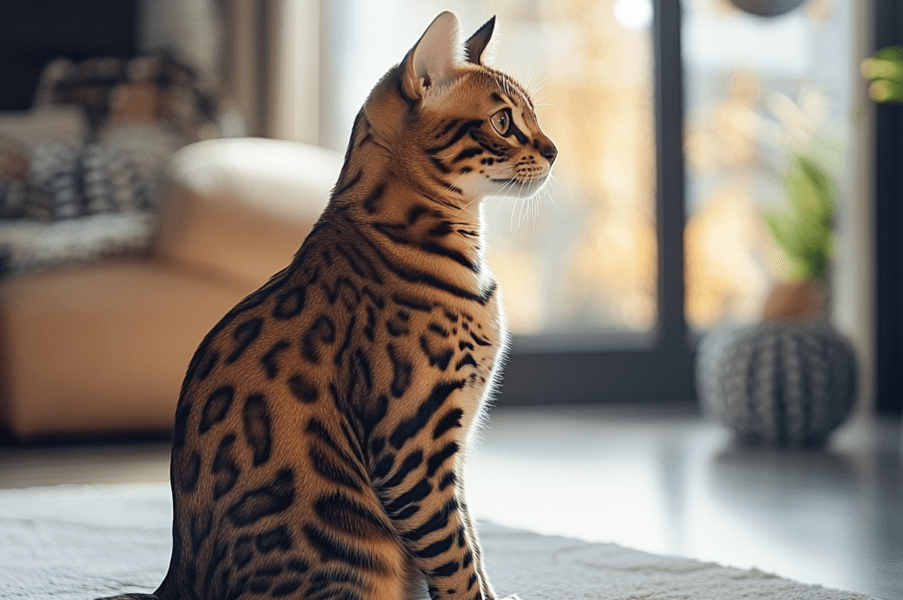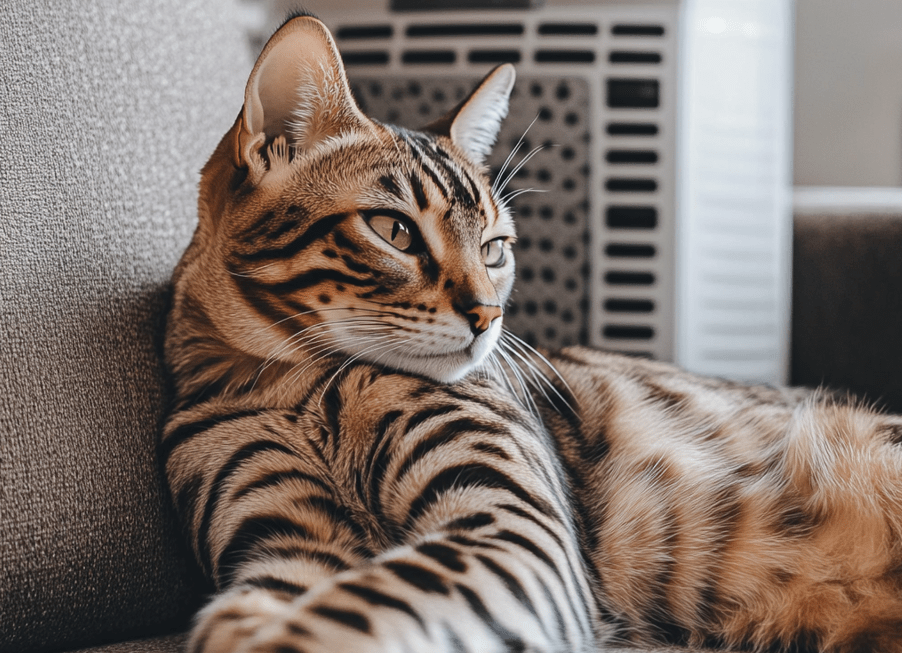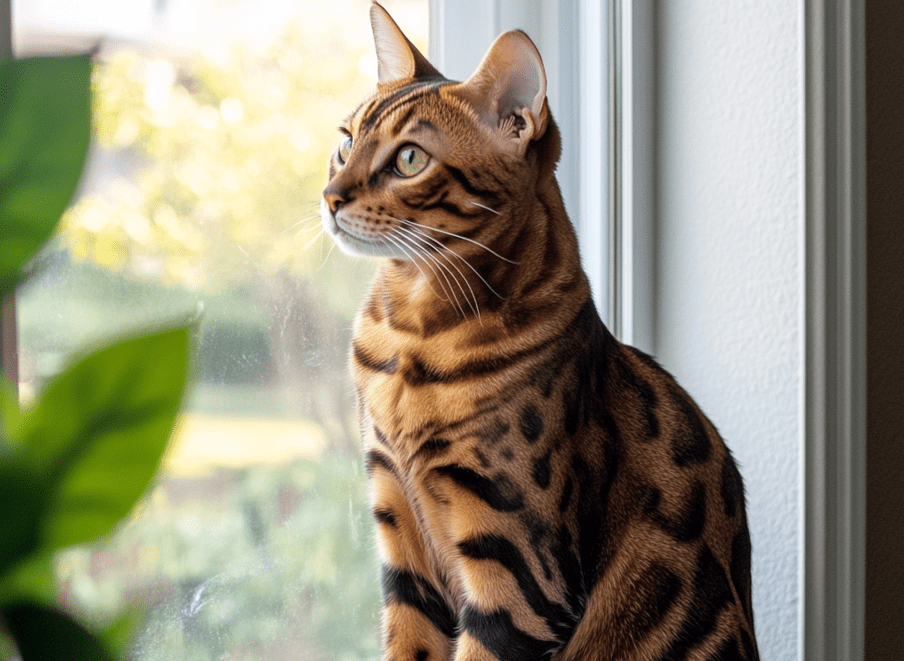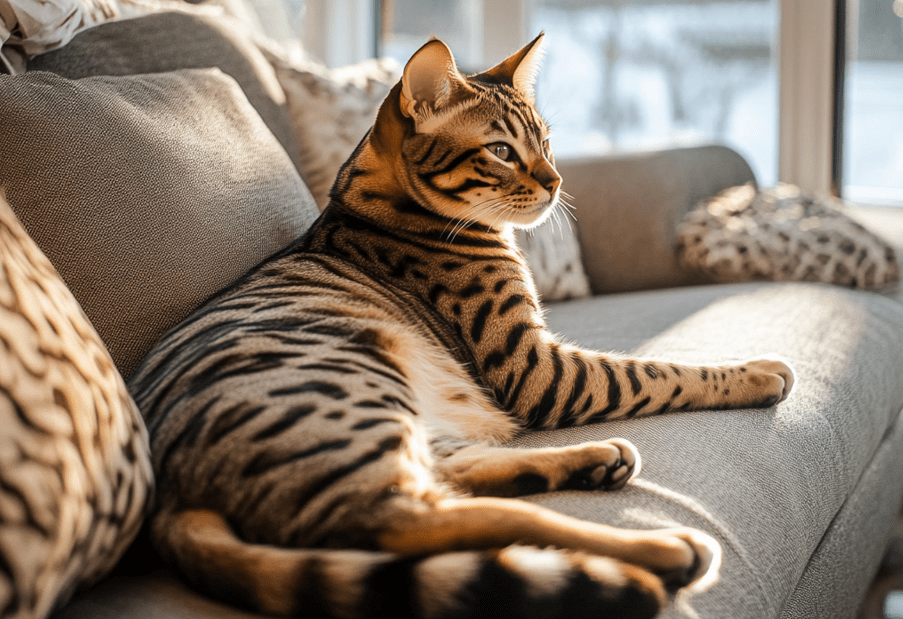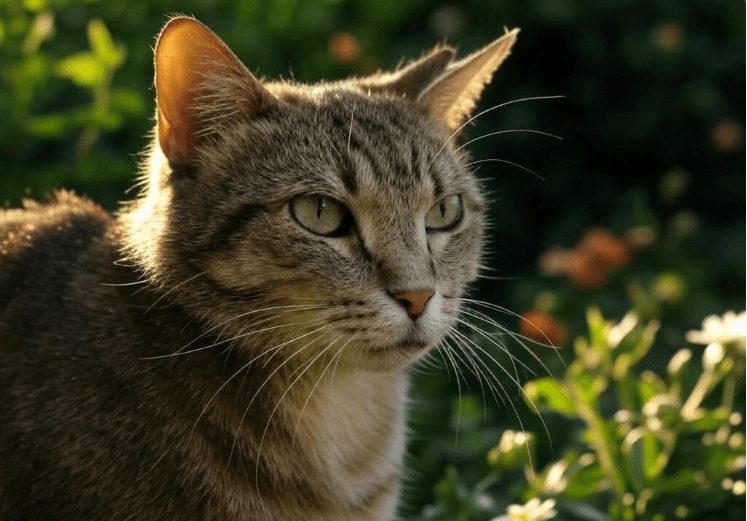
Bengal cats are energetic, agile, and love to climb, making a DIY cat tree for Bengal cats an ideal project to satisfy their natural instincts. A well-designed cat tree provides a safe space for your Bengal to exercise, explore, and relax while preventing destructive behavior like scratching furniture. This comprehensive guide walks you through building a custom cat tree tailored to your Bengal’s climbing needs, with step-by-step instructions, material lists, and design tips. Whether you’re a seasoned DIYer or a beginner, this article will help you create a sturdy, Bengal-approved cat tree that enhances your cat’s environment.
Why Bengals Need a Cat Tree
Bengal cats, descended from the Asian leopard cat, are known for their athleticism, curiosity, and love for vertical spaces. Their wild ancestry drives them to climb, perch, and survey their territory, making a cat tree an essential part of their environment. A DIY cat tree for Bengal cats not only caters to these instincts but also offers mental and physical stimulation, reduces boredom, and protects your home from claw damage.
Benefits of a Cat Tree for Bengals
Physical Exercise: Encourages climbing, jumping, and stretching to keep your Bengal fit.
Mental Stimulation: Provides a space for exploration and play, reducing stress.
Territorial Confidence: Elevated perches allow Bengals to survey their domain, boosting their sense of security.
Scratching Outlet: Sisal-covered posts satisfy their scratching instincts, sparing your furniture.
Custom Fit: A DIY cat tree lets you tailor the design to your Bengal’s size, energy level, and preferences.
Planning Your DIY Cat Tree
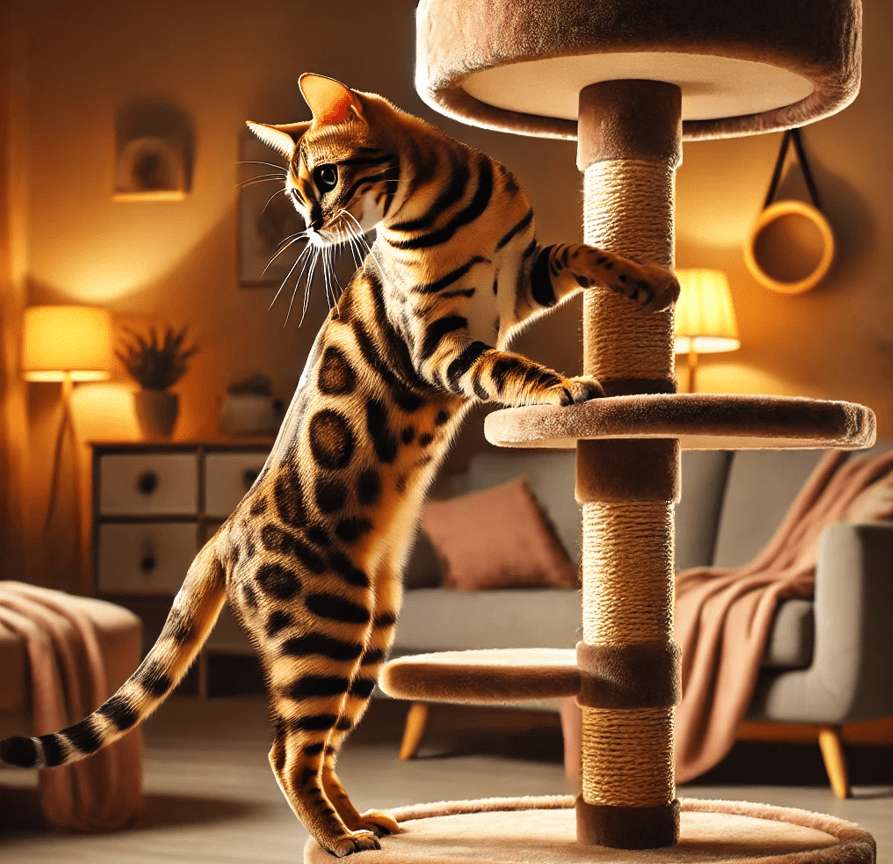
Before starting your DIY cat tree for Bengal, careful planning ensures the final product is safe, functional, and appealing to your cat. Consider these factors:
1. Assess Your Bengal’s Needs
Size and Weight: Bengals are medium to large cats (8-15 pounds), so the tree must be sturdy enough to support their weight during vigorous play.
Activity Level: High-energy Bengals need multiple levels, perches, and scratching posts.
Preferences: Does your Bengal prefer high perches, tunnels, or cozy hideaways? Observe their habits to guide your design.
2. Space and Location
Available Space: Measure the area where the cat tree will live (e.g., living room corner, near a window).
Height: Bengals love height, so aim for a tree at least 4-6 feet tall, ensuring it fits under your ceiling.
Stability: Place the tree on a flat surface away from edges to prevent tipping.
3. Budget
A DIY cat tree for Bengal can cost $50-$150, depending on materials. Reusing items like old crates or carpet scraps can lower costs.
4. Safety Considerations
Sturdy Base: A wide, heavy base prevents wobbling or tipping.
Non-Toxic Materials: Use pet-safe glues, paints, and fabrics.
Secure Fasteners: Ensure screws and nails are tightly fastened and not exposed.
Materials and Tools Needed
Here’s a comprehensive list of materials and tools for building a DIY cat tree for Bengal cats. Adjust quantities based on your design.
Materials
Plywood: ¾-inch thick for the base (3×3 feet) and platforms (1.5×1.5 feet each).
Wooden Posts: 4×4 or 2×4 lumber for vertical supports (cut to desired heights, e.g., 3-5 feet).
Sisal Rope: ⅜-inch thick, 50-100 feet for wrapping scratching posts.
Carpet or Faux Fur: Pet-safe, durable fabric to cover platforms and perches.
PVC Pipe or Cardboard Tubes: Optional for tunnels or additional supports.
Screws and Nails: 2-3 inch wood screws and finishing nails for assembly.
Wood Glue: Non-toxic, strong adhesive for extra stability.
Hammock Fabric: Optional, durable canvas or fleece for a cozy lounge area.
Brackets or L-Angles: For securing platforms to posts.
Optional Add-Ons: Dangling toys, bells, or feather attachments for extra fun.
Tools
Power Drill: For drilling holes and driving screws.
Saw: Hand saw or circular saw for cutting wood.
Staple Gun: To attach carpet or fabric.
Measuring Tape: For precise measurements.
Sanding Paper: To smooth rough edges.
Hot Glue Gun: For securing sisal rope.
Level: To ensure platforms are even.
Safety Gear: Gloves and goggles for protection.
Step-by-Step Guide to Building a DIY Cat Tree for Bengal Cats
This guide outlines how to build a 5-foot-tall cat tree with a base, three platforms, two scratching posts, and a hammock. Adjust dimensions or features to suit your Bengal’s needs.
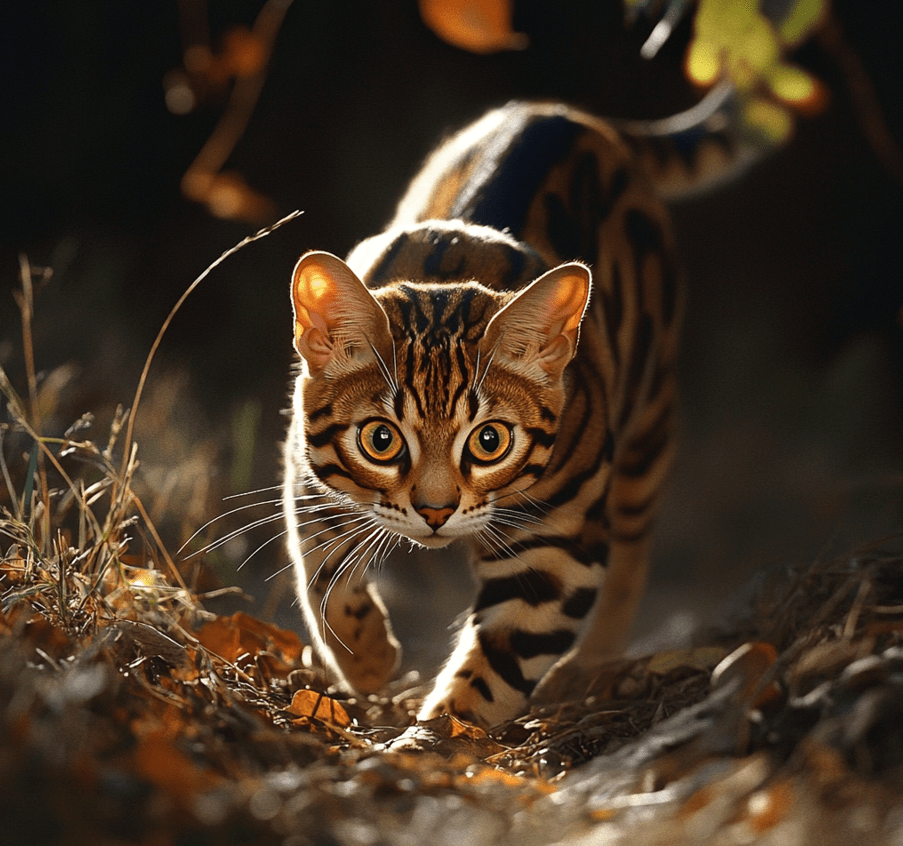
Step 1: Design Your Cat Tree
Sketch a simple design with the following components:
-
A wide base (3×3 feet) for stability.
-
Two vertical posts (4 feet and 3 feet tall) wrapped in sisal rope.
-
Three platforms at varying heights (e.g., 1.5×1.5 feet each).
-
A hammock suspended between platforms.
-
Optional tunnel or dangling toys.
Tip: Place the tallest perch near a window for your Bengal to enjoy bird-watching.
Step 2: Prepare the Base
-
Cut a 3×3-foot piece of ¾-inch plywood for the base.
-
Sand the edges to remove splinters.
-
Cover the base with carpet or faux fur using a staple gun, wrapping edges neatly.
-
Ensure the base is heavy enough to prevent tipping (add weight like a concrete block underneath if needed).
Step 3: Build the Vertical Posts
-
Cut two 4×4 posts to 4 feet and 3 feet, respectively.
-
Sand the posts to smooth any rough surfaces.
-
Wrap each post tightly with sisal rope, securing the ends with hot glue or staples. Start at the bottom and work up, overlapping slightly for durability.
-
Attach the posts to the base using L-brackets and wood screws, ensuring they’re perpendicular (use a level).
Step 4: Create and Attach Platforms
-
Cut three 1.5×1.5-foot plywood pieces for platforms.
-
Sand and cover each platform with carpet or faux fur, securing with staples.
-
Attach platforms to the posts at varying heights (e.g., 1 foot, 2.5 feet, and 4 feet) using L-brackets and screws.
-
Ensure platforms are level and securely fastened to support your Bengal’s weight.
Step 5: Add a Hammock
-
Cut a 1×1-foot piece of canvas or fleece for the hammock.
-
Sew or staple the edges to prevent fraying.
-
Attach the hammock between two platforms or posts using strong rope or metal hooks, ensuring it’s taut but slightly flexible.
-
Test the hammock’s weight capacity (should hold at least 20 pounds).
Step 6: Optional Features
-
Tunnel: Secure a PVC pipe or cardboard tube to a platform using brackets, covering it with carpet for texture.
-
Dangling Toys: Attach feathers or bells to platforms with pet-safe string for extra engagement.
-
Perch Padding: Add a cushioned mat to the top perch for comfort.
Step 7: Final Assembly and Safety Check
-
Double-check all screws, brackets, and glue points for stability.
-
Test the tree by gently shaking it to ensure it doesn’t wobble.
-
Vacuum any loose carpet fibers or sawdust.
-
Place the cat tree in its final location, ideally near a window or in a quiet corner.
Step 8: Introduce Your Bengal to the Cat Tree
-
Place treats or toys on the platforms to entice your Bengal to explore.
-
Sprinkle catnip on scratching posts to attract their attention.
-
Encourage climbing by playing with a feather wand near the tree.
-
Be patient—some Bengals may take a few days to fully embrace the new structure.
Customization Ideas for Your DIY Cat Tree

Tailor your DIY cat tree for Bengal to make it unique and engaging:
Multi-Level Design: Add more platforms or ramps for a complex climbing experience.
Themed Aesthetics: Paint the base or use patterned fabric to match your home decor (use pet-safe paints).
Interactive Elements: Incorporate puzzle feeders or hidden compartments for treats.
Modular Structure: Design detachable platforms for easy reconfiguration.
Window Perch: Position a high platform near a window with a cushioned mat for lounging.
Safety Tips for Your DIY Cat Tree
Stability: Ensure the base is wide and heavy to prevent tipping, especially during vigorous play.
Material Safety: Use non-toxic glues, paints, and fabrics to avoid harm if chewed.
Regular Maintenance: Check for loose screws or frayed rope monthly and repair as needed.
Supervise Initial Use: Watch your Bengal’s interactions to ensure the tree is safe and engaging.
Avoid Sharp Edges: Sand all wood surfaces and cover exposed nails or screws.
Cost-Saving Tips
Building a DIY cat tree for Bengal doesn’t have to break the bank. Try these budget-friendly ideas:
Repurpose Materials: Use old crates, shelves, or carpet remnants.
Shop Secondhand: Find plywood or lumber at salvage yards or thrift stores.
Bulk Buy: Purchase sisal rope or carpet in bulk for multiple projects.
datetime: 2025-04-27T00:00:00Z
DIY Hammock: Use old clothing or fabric scraps for the hammock instead of buying new fabric.
Borrow Tools: Borrow a drill or saw from a friend to save on tool costs.
Common Mistakes to Avoid
Skimping on Stability: A wobbly cat tree is unsafe and may discourage your Bengal from using it.
Using Toxic Materials: Avoid standard glues or paints that could harm your cat if ingested.
Ignoring Size: Ensure platforms and perches are large enough for your Bengal to comfortably sit or lie down.
Overcomplicating the Design: Keep the structure simple for your first build to avoid frustration.
Neglecting Maintenance: Regularly inspect the tree for wear and tear to ensure long-term safety.
Conclusion
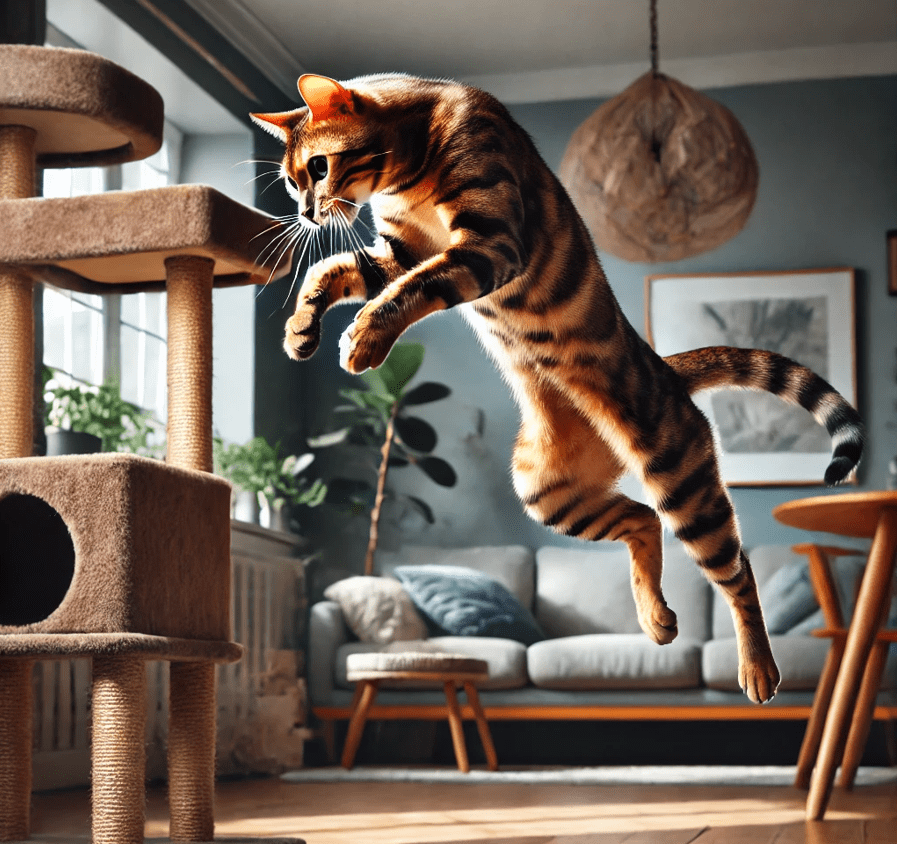
Building a DIY cat tree for Bengal cats is a rewarding project that enhances your cat’s environment while saving money compared to store-bought options. By following this step-by-step guide, you can create a sturdy, engaging, and safe cat tree that caters to your Bengal’s climbing, scratching, and lounging needs. Customize the design to suit your cat’s personality and your home’s aesthetic, and prioritize safety with stable construction and pet-safe materials. With a bit of effort, you’ll provide your Bengal with a stimulating playground that keeps them happy, healthy, and entertained.
For more Bengal care tips or DIY inspiration, consult your veterinarian or trusted pet resources. Your Bengal will thank you for their new favorite spot in the house!

